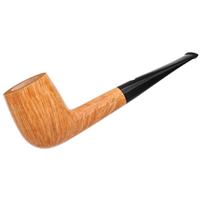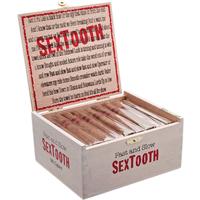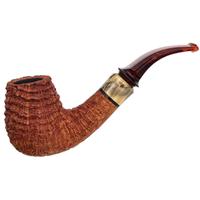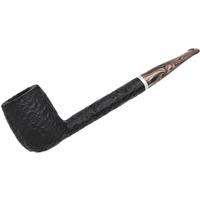Given the recent threads discussing plume and mold, I thought I would do a bit of research.
I didn't find much written on the subject with the exception of one article related to tobacco-infesting fungi, titled The Water Content/Water Activity Relationship of Cured Tobacco and Water Relations of Associated Spoilage Fungi by E. S. Mutasa, K. J. Seal & N. Magan, published in the journal International Biodeterioration 26 (1990) 381-396. All of the following information is my paraphrasing from this one source.
The article looked at the effects of different moisture contents on different types of tobaccos, stored for various lengths of time, and then isolated and identified the different species of fungi that caused spoilage in them.
An important consideration taken by these researchers was their establishing a difference between Moisture Content and Available Water (AW). It was found that Virginia and Oriental tobaccos do not provide the fungal spores as much Available Water at any given Moisture Content as other types of tobaccos. There is a suspected correlation with this fact, and the fact that Virginias and Orientals have a much higher sugar content than other tobaccos, such as Burley for instance.
While Virginias do not have as much AW as Burley at any given moisture content, at the same AW rating Virginia tobaccos are much more conducive to fungal growth than Burley is.
The article mentioned that the moisture content range of between 11% and 15% is the range generally considered safe from fungal attack by the tobacco industry.
As an example of AW and moisture content, the article mentions an AW of 0.75, correlating it to a moisture content of 26.8% in Virginia and 19.4% in Burley. At this AW the only fungal species that is found to grow is Aspergillus glaucus, although it is at the lower level of it's germination AW range. With an increase in AW more species germinate, and those that do germinate tend to grow faster as the AW increases. Below AW 0.85 only A. glaucus was found in every tobacco tested. At 0.80 AW other Aspergillus species and Penicillum species started to germinate, with different species in different types of tobacco.
The AW of 0.70 seems to be the safest maximum available water if one wants to keep their tobacco fungus free for the long term. From my interpretation of figure 1 in the article, this confirms the 15% moisture content which was mentioned as considered generally safe by the tobacco industry, although the authors seem to think 15% may still be risky.
This study didn't test the effects of different temperatures, oxygen concentrations, casings, humectants, or anti-fungals which may be added or variable with the tobaccos that we cellar.
A little add-on by me: Fungal spores are always going to be present in our tobacco, along with almost every food we eat. It is when they grow to a large colony, eating our food and tobacco that we say it is spoiled. A common anti-fungal used in tobacco is calcium propionate (Mycoban), this anti-fungal is also used in many of our daily breads.
I didn't find much written on the subject with the exception of one article related to tobacco-infesting fungi, titled The Water Content/Water Activity Relationship of Cured Tobacco and Water Relations of Associated Spoilage Fungi by E. S. Mutasa, K. J. Seal & N. Magan, published in the journal International Biodeterioration 26 (1990) 381-396. All of the following information is my paraphrasing from this one source.
The article looked at the effects of different moisture contents on different types of tobaccos, stored for various lengths of time, and then isolated and identified the different species of fungi that caused spoilage in them.
An important consideration taken by these researchers was their establishing a difference between Moisture Content and Available Water (AW). It was found that Virginia and Oriental tobaccos do not provide the fungal spores as much Available Water at any given Moisture Content as other types of tobaccos. There is a suspected correlation with this fact, and the fact that Virginias and Orientals have a much higher sugar content than other tobaccos, such as Burley for instance.
While Virginias do not have as much AW as Burley at any given moisture content, at the same AW rating Virginia tobaccos are much more conducive to fungal growth than Burley is.
The article mentioned that the moisture content range of between 11% and 15% is the range generally considered safe from fungal attack by the tobacco industry.
As an example of AW and moisture content, the article mentions an AW of 0.75, correlating it to a moisture content of 26.8% in Virginia and 19.4% in Burley. At this AW the only fungal species that is found to grow is Aspergillus glaucus, although it is at the lower level of it's germination AW range. With an increase in AW more species germinate, and those that do germinate tend to grow faster as the AW increases. Below AW 0.85 only A. glaucus was found in every tobacco tested. At 0.80 AW other Aspergillus species and Penicillum species started to germinate, with different species in different types of tobacco.
The AW of 0.70 seems to be the safest maximum available water if one wants to keep their tobacco fungus free for the long term. From my interpretation of figure 1 in the article, this confirms the 15% moisture content which was mentioned as considered generally safe by the tobacco industry, although the authors seem to think 15% may still be risky.
This study didn't test the effects of different temperatures, oxygen concentrations, casings, humectants, or anti-fungals which may be added or variable with the tobaccos that we cellar.
A little add-on by me: Fungal spores are always going to be present in our tobacco, along with almost every food we eat. It is when they grow to a large colony, eating our food and tobacco that we say it is spoiled. A common anti-fungal used in tobacco is calcium propionate (Mycoban), this anti-fungal is also used in many of our daily breads.












